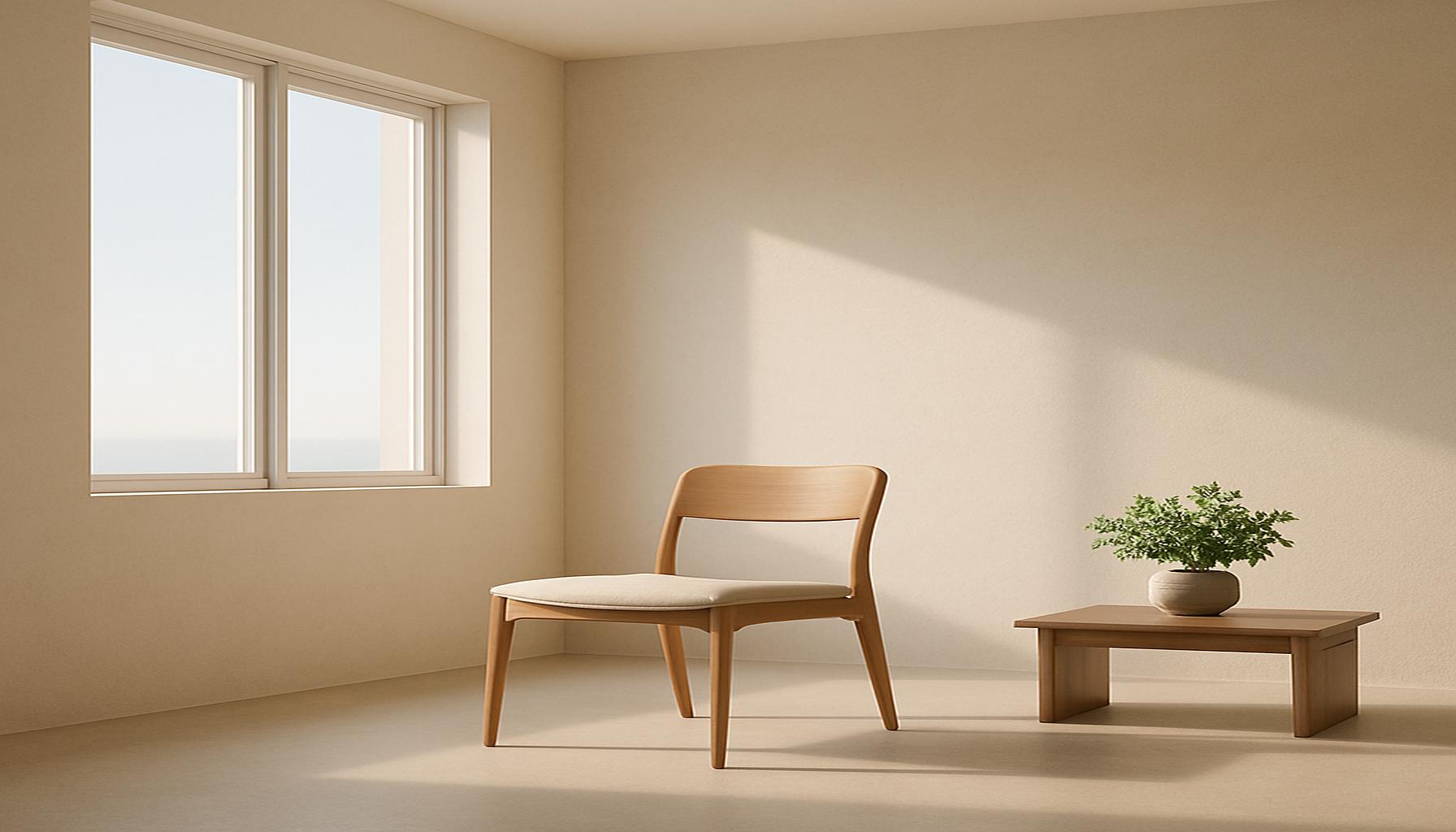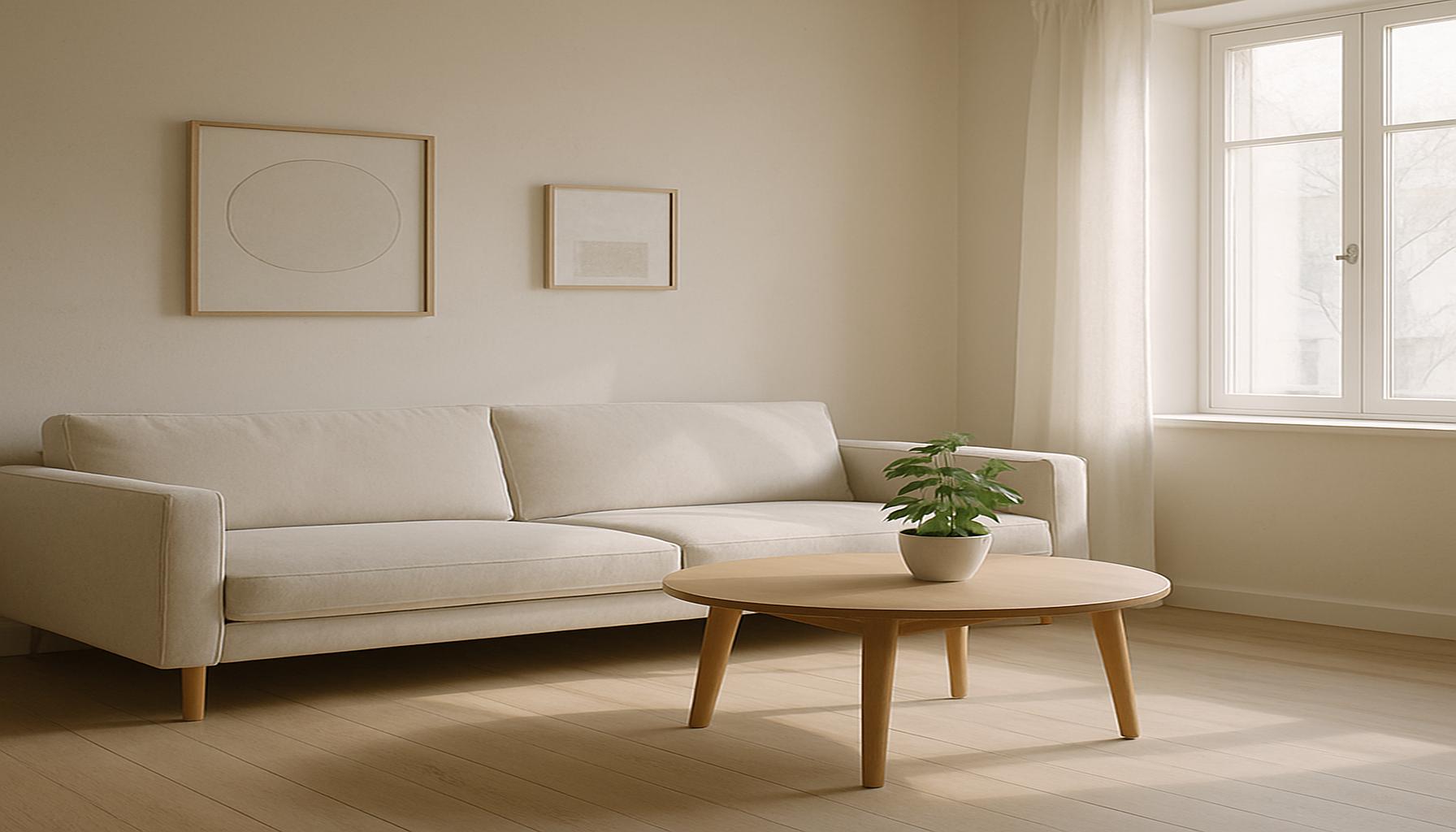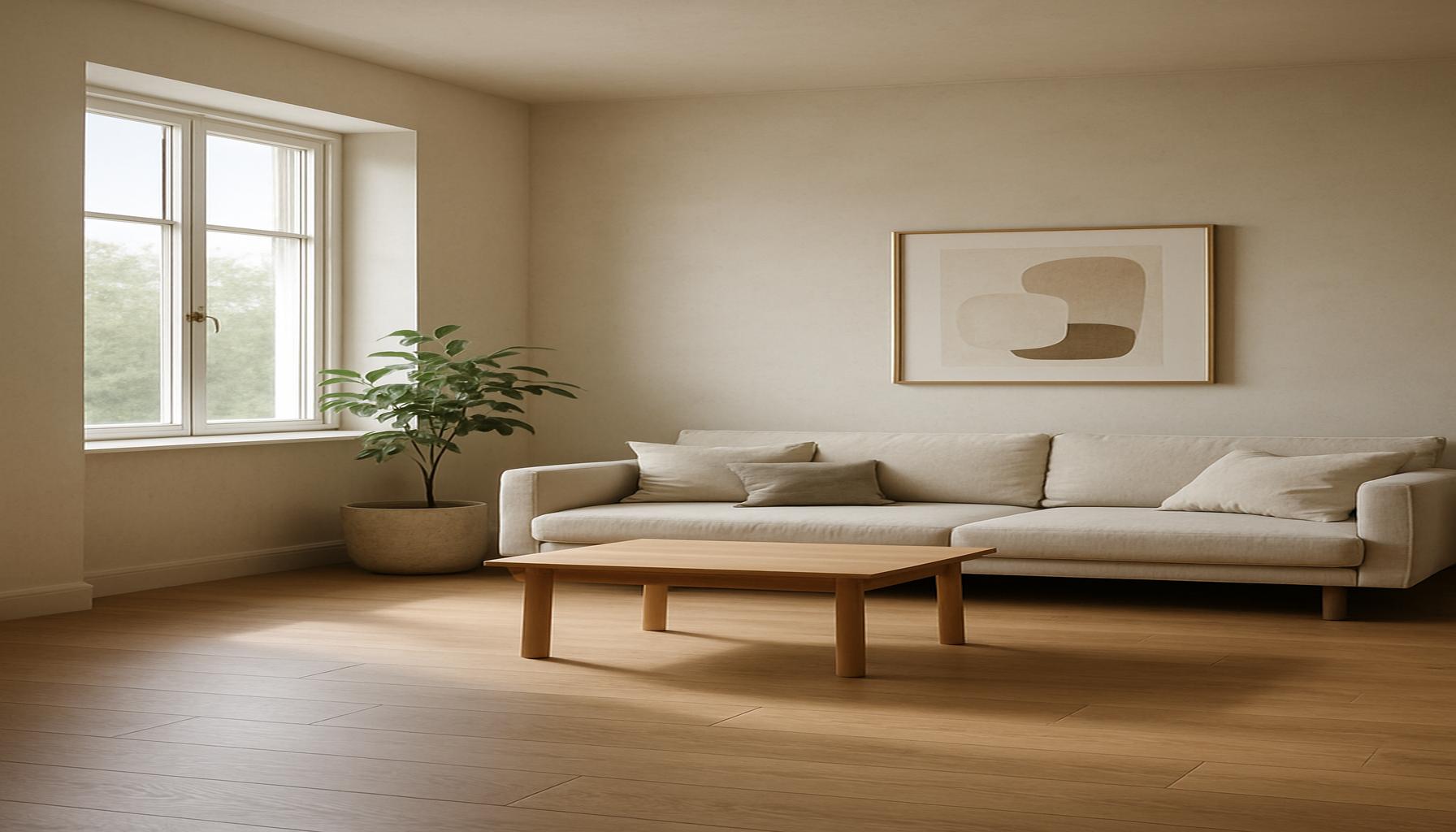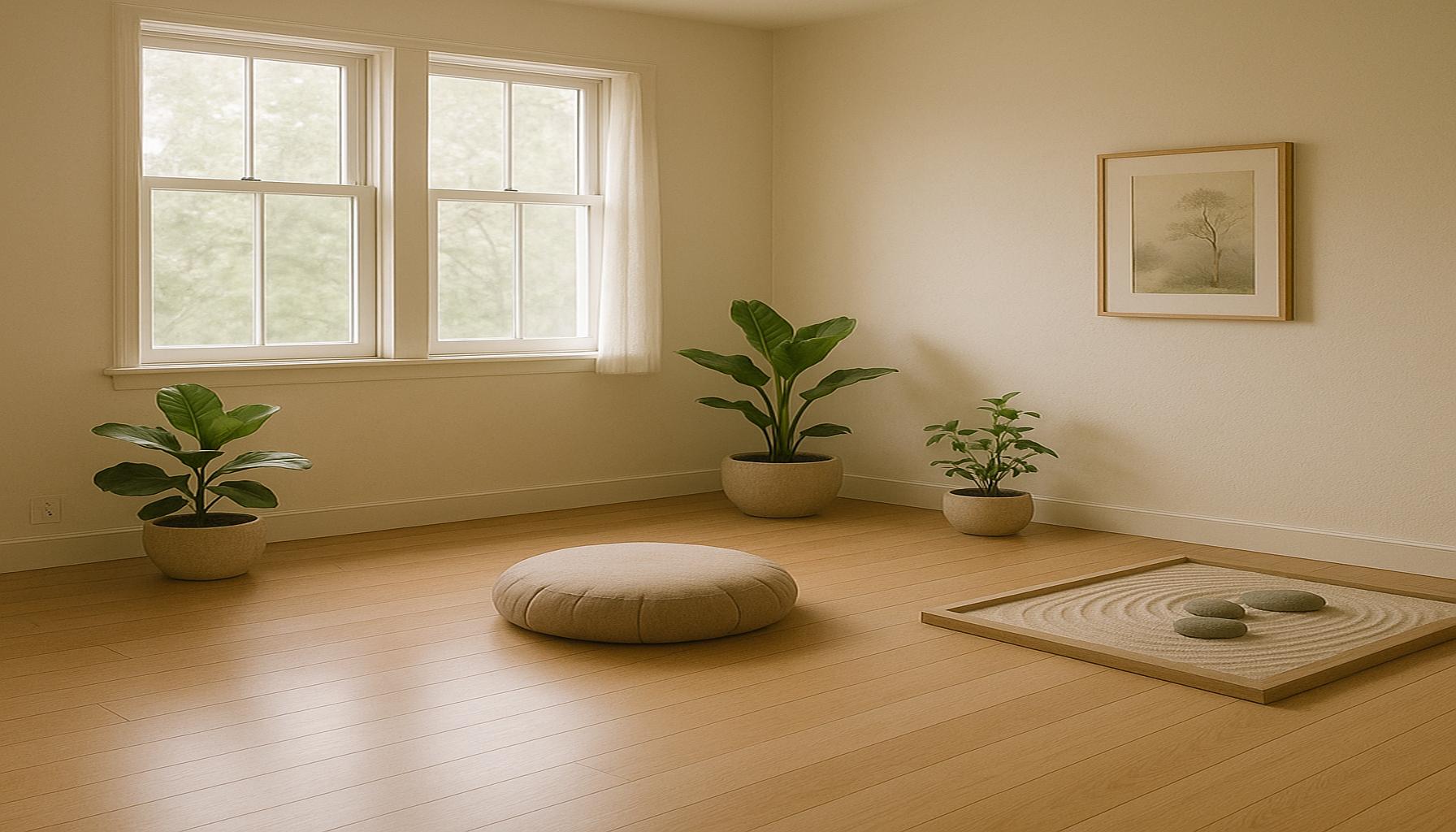The Power of Empty Space: Cultivating Serenity through Detachment

Finding Peace in the Everyday
In a world filled with constant noise and endless distractions, finding peace can seem like an elusive dream. The concept of empty space offers a refreshing antidote, allowing individuals to disconnect from the chaos and reconnect with their inner selves. Embracing detachment becomes vital in this pursuit, leading to a profound sense of serenity. Understanding the importance of empty space not only pertains to physical surroundings but also encompasses the emotional and mental layers of our lives.
Consider the following impacts of cultivating empty space:
- Enhanced Focus: A calm environment promotes better concentration. Research indicates that environments cluttered with distractions can hinder cognitive functions, while quiet, open spaces foster clearer thinking. For instance, many professionals find that working in serene environments, like libraries or parks, significantly boosts their productivity and creativity.
- Emotional Clarity: Detachment allows for introspection and self-awareness. By creating mental space through activities like meditation or journaling, individuals can better process their emotions and experiences. This practice is especially prevalent in mindfulness movements across the United States, where people seek clarity amidst the pressures of modern life.
- Reduces Stress: Simplifying one’s surroundings can significantly lower anxiety levels. Minimalist living, popularized by figures like Marie Kondo, encourages people to declutter not only their physical spaces but also their mental landscapes. Research shows that individuals who embrace minimalism report lower stress levels and an increased sense of well-being.
Exploring the idea of empty space isn’t just about the physical environment—it’s about creating mental and emotional freedom too. Cities like Seattle and San Francisco embrace parks and open areas as refuges from urban bustle. For example, the expansive Golden Gate Park offers diverse landscapes and trails for city dwellers to unwind. These spaces provide not just room to breathe but also opportunities for reflection, promoting a deeper connection with oneself and nature.
Delving into the power of detachment opens doors to mindfulness and personal growth. Practices like yoga and tai chi are increasingly popular, reflecting a societal shift towards well-being and balance. As societies focus on well-being, they simultaneously foster connections among individuals who recognize the value of shared space and quiet minds. By integrating moments of stillness into daily routines, you can discover that serenity isn’t merely a destination; it’s a journey worth taking, paving the way for a more fulfilling and peaceful life.
As you uncover how this practice transforms daily living, you will be inspired to explore empty spaces—both physical and mental. The art of embracing simplicity and quiet is a transformative experience waiting to be discovered.
DIVE DEEPER: Click here for expert strategies
Embracing Minimalism for Mental Clarity
As the pace of modern life accelerates, the idea of minimalism emerges as a beacon of hope for those seeking to regain control over their lives. This lifestyle is not merely about reducing physical possessions; it’s a philosophy centered around creating empty space that nurtures mental clarity and emotional health. By letting go of excess—both in material possessions and emotional burdens—individuals can foster a sense of peace that resonates through every aspect of their daily lives.
The practice of minimalism has garnered attention as a viable solution for those grappling with the overwhelming pressures of contemporary existence. By prioritizing what truly matters, individuals embark on a journey towards clarity and purpose. From decluttering closets to emotionally detaching from toxic relationships, the benefits of embracing minimalism are both profound and far-reaching.
Consider the myriad ways in which minimalism can enhance one’s well-being:
- Clearer Priorities: By focusing on essential items and experiences, individuals sharpen their understanding of what gives their life meaning. This clarity not only enhances decision-making but also aligns one’s daily actions with their deepest values.
- Increased Creativity: A decluttered environment invites opportunities for creativity to flourish. Without the visual noise of excess, the mind is freed to explore new ideas, engage in hobbies, and even foster innovative problem-solving.
- Stronger Relationships: When individuals detach from materialism, they can invest more time and energy into nurturing personal connections. Engaging with loved ones becomes a richer experience as they appreciate the value of shared moments over consumerism.
Evidence of the benefits of minimalism extends beyond anecdotal accounts. Research indicates that individuals who adopt minimalist principles report significantly lower levels of anxiety and stress. Studies have shown that living with less can lead to improved mental health outcomes, including heightened feelings of satisfaction and contentment. This correlation highlights the intrinsic value of cultivating empty spaces, both physically and mentally, as a method for achieving long-lasting serenity.
Moreover, the role of technology in our lives cannot be underestimated. The constant buzz of notifications and the lure of social media can clutter our mental space, making it crucial to create boundaries. Limiting screen time and curating one’s digital environment can contribute significantly to cultivating serenity. By intentionally designing our online presence—such as following uplifting content and unfollowing sources of negativity—we can foster a virtual landscape that mirrors the simplicity and peace of our physical spaces.
As we transition from accumulating possessions to embracing simplicity, the journey toward cultivating serenity through detachment unfolds. This transformative process invites individuals to explore empty spaces in their lives, revealing a pathway to deeper self-awareness and emotional well-being. By understanding the profound impact of minimalism and the intentional creation of empty spaces, we can all begin to reclaim our inner peace amidst the chaos.
The Power of Empty Space: Cultivating Serenity through Detachment
In a world that often prioritizes clutter and constant engagement, the concept of empty space emerges as a transformative force. This principle emphasizes the beauty of less, inviting individuals to create environments and mindsets that foster peace and clarity. Through detachment, both physically and mentally, one can explore the rich potential of spaciousness. This space is not merely void; it is a canvas for serenity and introspection.
Creating empty spaces in our homes can enhance our well-being. Minimalist design not only uplifts the aesthetic of a space but also enriches the experience of living within it. By removing unnecessary items, individuals often find they can focus better on the things that truly matter, such as relationships and personal growth.
Moreover, detaching from material possessions allows for a re-evaluation of priorities. The essence of cultivating serenity lies in understanding that happiness does not stem from accumulation, but rather from experiencing moments of stillness and presence. By embracing this philosophy, people often report feeling lighter and more fulfilled.
| Advantage | Description |
|---|---|
| Enhanced Focus | Empty spaces bring concentration, allowing individuals to channel their energy towards meaningful tasks instead of distractions. |
| Emotional Clarity | Detaching from physical belongings provides a mental liberation, facilitating clearer thoughts and emotional balance. |
The journey of understanding empty space transcends physical decluttering; it is a deep dive into the psyche and purpose. Cultivating this serenity is a path worth exploring, as it not only transforms our surroundings but also shapes our inner landscapes.
DISCOVER MORE: Click here to learn how minimalism can boost your productivity
Creating Physical and Mental Landscapes for Peace
The journey toward achieving serenity through detachment takes many forms, as individuals find various ways to create both physical and mental landscapes that support a serene lifestyle. While minimalism focuses on reducing clutter, the emphasis also lies in designing spaces that promote calmness and relaxation. One practical method for achieving this is through intentional spatial arrangement.
Designing your living and working environments with intention can yield significant effects on mental state. Consider principles from environmental psychology, which study the relationship between people and their surroundings. For instance, employing natural light, incorporating plants, and choosing a soothing color palette can transform any space into one that invites tranquility. A simple change—such as rearranging furniture to create open areas for movement or adding soft lighting fixtures—can foster a nurturing atmosphere that encourages relaxation.
Furthermore, the practice of mindful decluttering enhances these efforts. This goes beyond simply removing items from view; it involves a thoughtful assessment of what truly serves a purpose in our lives. By evaluating each possession and understanding its role, we create a more profound connection to our environment. A study conducted by UCLA found that homes filled with clutter can lead to increased levels of cortisol, the stress hormone, undermining the very serenity we seek. Thus, each item removed not only produces more physical space but can significantly contribute to mental wellness.
The impact of nature on mental well-being is similarly profound. Studies suggest that spending time in green spaces can decrease symptoms of anxiety and depression, further supporting the notion that cultivating empty space—outdoors and indoors—can produce positive mental health outcomes. Creating a small garden or even incorporating a few potted plants can generate an immediate connection to nature, grounding individuals in their surroundings and promoting feelings of peace.
Moreover, coupling these physical spaces with techniques such as meditation or mindfulness fosters a powerful synergy. Practices like yoga, mindfulness meditation, and deep breathing exercises can enhance the detachment process, helping individuals learn to release attachments both mentally and emotionally. Various studies demonstrate that engaging in these practices can lead to decreased anxiety, improved focus, and enhanced emotional regulation. Pairing physical spaces designed for serenity with mental exercises helps create an environment ripe for clarity and calm.
For many, technology acts as both a tool and a barrier to achieving empty space. However, technology can also be harnessed for good. Digital detoxing—setting aside dedicated times to disconnect from electronic devices—can create the mental space needed for reflection and creativity. Apps promoting mindfulness and meditation, such as Headspace and Calm, can aid in this effort, allowing users to engage in structured practices from the comfort of their homes.
Even within our busy lifestyles, initiating small shifts can lead to significant changes when it comes to cultivating serenity through detachment. Whether it’s arranging a workspace for increased mindfulness or nurturing a home environment that fosters calm, the choices we make in structuring our worlds—both physically and mentally—play a critical role in unlocking the power of empty space. As we traverse this path, we may inadvertently discover the serenity that resides in the simplicity of our intentions and the spaces we create around us.
DIVE DEEPER: Click here to discover the power of minimalism
Embracing Serenity through the Gift of Space
In conclusion, the journey toward cultivating serenity through detachment reveals the transformative power of empty space—both physical and mental. By embracing principles of intentional design and mindful decluttering, individuals can reshape their environments to support peaceful living. The integration of natural elements, soft lighting, and purposeful spatial arrangements fosters an atmosphere that encourages relaxation and clarity. Furthermore, the profound benefits of connecting with nature cannot be overstated, with research indicating that such connections significantly reduce feelings of anxiety and depression.
However, it is essential to recognize that detachment is not solely a physical endeavor; it encompasses a mental and emotional journey that involves practices such as mindfulness and meditation. These techniques help individuals navigate their internal landscapes, promoting a sense of calm and emotional regulation. As we find ways to step back from the constant noise of our modern lives—be it through a digital detox or the nurturing of a tranquil space at home—we unlock the potential for profound peace.
Ultimately, the path to embracing serenity lies in our ability to create and recognize the value of empty space. By prioritizing intentionality in both our environments and our minds, we empower ourselves to reclaim clarity and tranquility within our hectic schedules. As you embark on this journey, consider what space you can cultivate, both around you and within, and explore how such changes could enhance your own experience of life. The power of empty space awaits your discovery.


